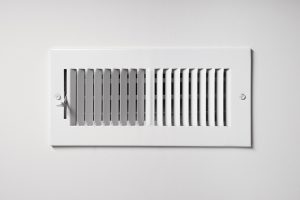 Here’s one of the puzzles of central heating in the modern home: what if you only want to heat parts of your home, and leave the empty rooms without any heating? Sounds like a good way to save energy! But the standard central heating system using a furnace or heat pump sends heated air to every room attached to the ventilation system, regardless of whether the rooms need it or not. This is like having a single light switch controlling all the lights in a house. Turn on one light—you turn them all on!
Here’s one of the puzzles of central heating in the modern home: what if you only want to heat parts of your home, and leave the empty rooms without any heating? Sounds like a good way to save energy! But the standard central heating system using a furnace or heat pump sends heated air to every room attached to the ventilation system, regardless of whether the rooms need it or not. This is like having a single light switch controlling all the lights in a house. Turn on one light—you turn them all on!
It doesn’t have to be this way for your heating, however. There are ways you can enjoy central heating while manipulating the heat so it only goes where it’s needed. Below are the two main ways to enjoy precise and energy-saving winter comfort.
Zone control systems
Also known as “zoning.” This is a way to alter the standard ventilation system for central furnaces and heat pumps so air is channeled to specific parts of the house (“zones”) and not to others. The simple explanation of how this works is that dampers inside the ducts close off ductwork sections so heated air doesn’t flow to the connected rooms.
However, simply stopping airflow doesn’t mean the heater uses less power. Zone control balances heat distribution so the heating system has to run less to supply only the zones requesting heat. Heat requests can be made through a central control thermostat, or by satellite thermostats located in the zones. This means a person can adjust the temperature in the room they’re in using the satellite thermostat without affecting the rest of the house.
It’s usually best to have a zone control system installed into a home as part of a full HVAC installation. This way the system can be tailored to match the new heater (and air conditioner). It is possible to retrofit a current HVAC system, however.
Ductless mini split heat pumps
Another way to have control over comfort is by bypassing ductwork altogether. A ductless mini split heat pump is similar to a standard heat pump, except that it doesn’t use a single indoor unit connected to ducts. It uses multiple smaller indoor units that are mounted on walls. Each unit contains a refrigerant coil and blower fan to send out heated air directly into a room. Because each unit can be controlled separate from the others using a remote, only the units in occupied rooms need to be on.
Ductless systems offer many other advantages: they also work as air conditioners (like all heat pumps), reduce energy loss that come with ducts, and don’t blow around as much dust and dander as standard HVAC systems. A ductless system is ideally suited for new home construction and home remodeling, as well as for older homes that don’t have space for ducts.
Whatever service you need for your home HVAC in Howell, MI, you can trust the job to us. We offer a wide range of heating installations.
First Choice Heating & Cooling: If Your Home Had a Voice, It Would Call First Choice!
